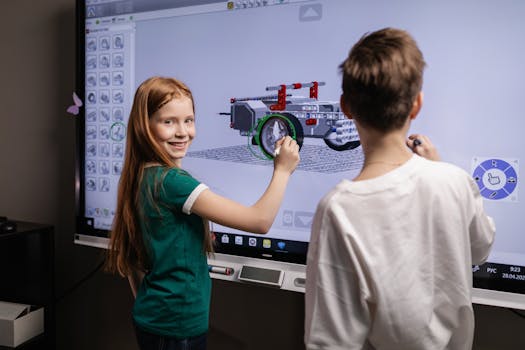
Engaging Minds: The Rise of Interactive Science and Technology Displays
Takeaways: Interactive science and technology displays are revolutionizing education by making learning engaging and immersive. These exhibits foster curiosity, enhance critical thinking skills, and promote STEM education. They are increasingly being implemented in museums, science centers, and educational institutions worldwide.
In today’s fast-paced world, traditional methods of learning are often not enough to capture the attention of learners, especially younger audiences. This is where interactive science and technology displays come into play. These innovative exhibits not only attract visitors but also actively engage them in the learning process, making science and technology accessible and enjoyable for everyone. In this article, we will explore the significance of interactive displays in education, their impact on learning, and how they are shaping the future of public engagement with science and technology.
The Importance of Interactive Displays in Education

One of the primary benefits of interactive displays is their ability to cater to various learning styles. Visual learners can benefit from dynamic visuals, auditory learners can engage with sound elements, and kinesthetic learners can physically interact with the exhibits. This multi-sensory approach enhances comprehension and retention of information.
Moreover, interactive displays help to demystify complex scientific concepts. For instance, a display that allows visitors to manipulate variables in a physics experiment provides an intuitive understanding of the principles at play, something that can be challenging to grasp through theoretical explanations alone. This hands-on experience promotes critical thinking and problem-solving skills, essential competencies in today’s workforce.
Transforming Museums and Science Centers
Museums and science centers are increasingly adopting interactive displays to enhance visitor experiences. Gone are the days when visitors merely walked through exhibits, reading labels and looking at artifacts. Today’s museums are designed as immersive environments where visitors can engage with exhibits through touchscreens, augmented reality, and physical interactions.
For example, the California Science Center features numerous interactive exhibits where visitors can experiment with scientific principles, from building structures to exploring the human body. Such experiences not only make learning fun but also encourage repeated visits, as there is always something new to discover.
Additionally, interactive displays can foster a sense of community and collaboration. Group activities, such as building a robot or solving a scientific puzzle, encourage teamwork and communication among participants. This collaborative aspect is particularly valuable in educational settings, as it mirrors the real-world working environments where teamwork is essential.
The Role of Technology in Interactive Displays

Augmented reality applications, for instance, can overlay digital information onto the physical world, providing users with richer context and interaction. Imagine visiting a museum where you can point your smartphone at an exhibit and see animations, videos, or additional information pop up on your screen. This integration of digital technology into physical exhibits creates a hybrid learning experience that is both informative and captivating.
Furthermore, data analytics can be employed to understand visitor interactions better. Museums can track which exhibits are most popular and how long visitors engage with each display. This information can guide future exhibit designs and improve the overall visitor experience.
Conclusion








